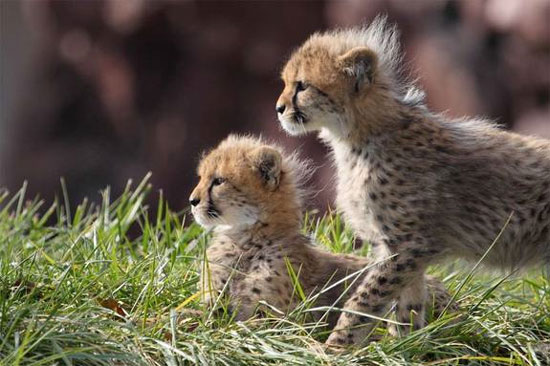Old newspapers reproduce thanks to IVF
The Smithsonian Institute for Biological Conservation (SCBI) at Front Royal found that the eggs of cheetahs are older (more than 8 years) good, allowing fertilization and delivering eggs to younger offspring to increase population. Cheetahs.
Analysis of hormones, eggs and uterus of 34 cheetahs in 8 research institutes, the results showed that leopards aged over 8 years developed abnormal, susceptible cells and cysts in the death zone. supply. This can prevent them from becoming pregnant, despite the fact that hormones and their eggs appear normal.

Old cheetahs are hard to reproduce but their eggs are still good (Photo: livescience)
According to the study, about 80% of older newspapers living in North America have never spawned. It is estimated that there are only about 7,500 to 10,000 remaining leopards in the wild. They are listed as a highly endangered animal by the International Association for Conservation of Nature.
But the discovery will allow researchers to extract eggs from older female leopards, then fertilize and transfer the eggs to more young leopard cubs, to increase the population of newspapers.The lack of genetic diversity in the environment of captivity can lead to death, reduce resistance against disease for the cubs.
Over the next 2 years, researchers plan to extract eggs from a cheetah over 8 years old, then fertilize and deliver eggs to a smaller young leopard. If successful, the technique could one day apply similarly to wild panther to increase the population of cheetahs confined to new genes.
In addition, SCBI researchers can produce embryos from fresh cheetah eggs, hoping to do the same with frozen eggs.
- Read electronic newspapers to help you live longer
- Online newspapers surpassed the paper in America
- Photograph of extremely rare Persian leopard in Russia
- Apricot newspapers were bitten by the same type in the death battle
- Rats eat with newspapers
- Interesting things about cougars
- Virgin mothers in the natural world
- Read newspapers directly from Facebook's News Feed
- Termites do not necessarily have to reproduce sexually
- Online newspapers achieved double-digit growth rates
- Foreign newspapers write about strange objects 'billions of money' in the belly of a pig
- Animals make friends with people
 Animal 'suffering' after hibernation
Animal 'suffering' after hibernation Why do goats climb well?
Why do goats climb well? Scientists were surprised to see chimpanzees eating turtles
Scientists were surprised to see chimpanzees eating turtles Giant catfish died deadly due to drought in Thailand
Giant catfish died deadly due to drought in Thailand Strange creature eggs appear at a depth of 6,200m in the Pacific Ocean
Strange creature eggs appear at a depth of 6,200m in the Pacific Ocean  The most unique dish in Mexico, found nowhere else, only the brave dare to try
The most unique dish in Mexico, found nowhere else, only the brave dare to try  You may not know: The elephant bird egg is the largest bird egg in history.
You may not know: The elephant bird egg is the largest bird egg in history.  Explore the Mass Incubators of Ancient Egypt
Explore the Mass Incubators of Ancient Egypt  46 million people shocked to find out what this is on the beach
46 million people shocked to find out what this is on the beach  Tigers don't eat their cubs, but why do these 5 species?
Tigers don't eat their cubs, but why do these 5 species? 